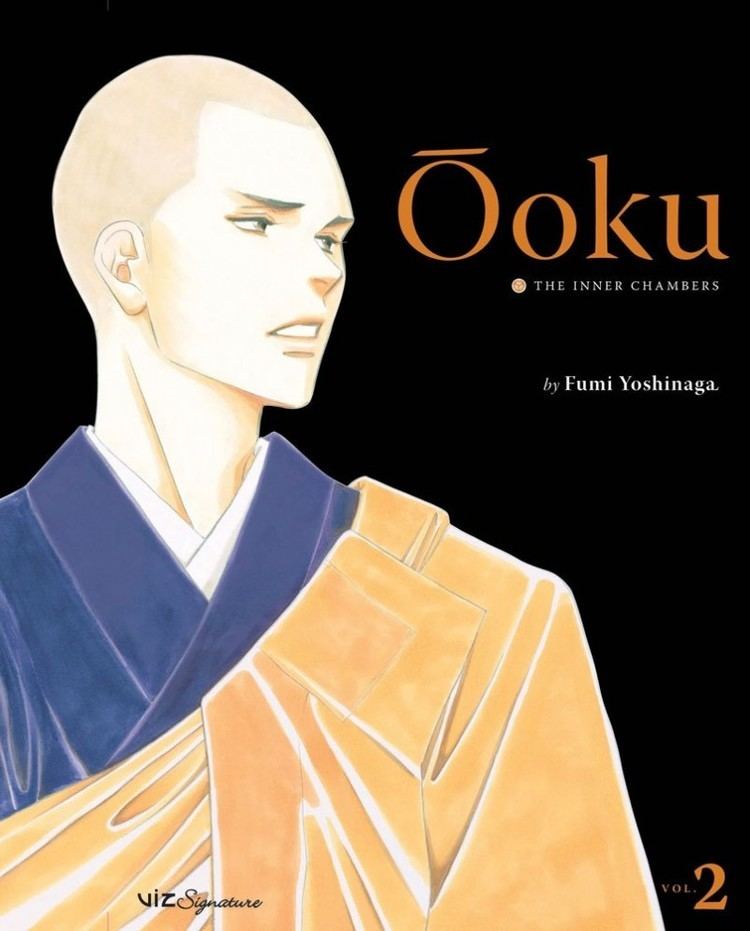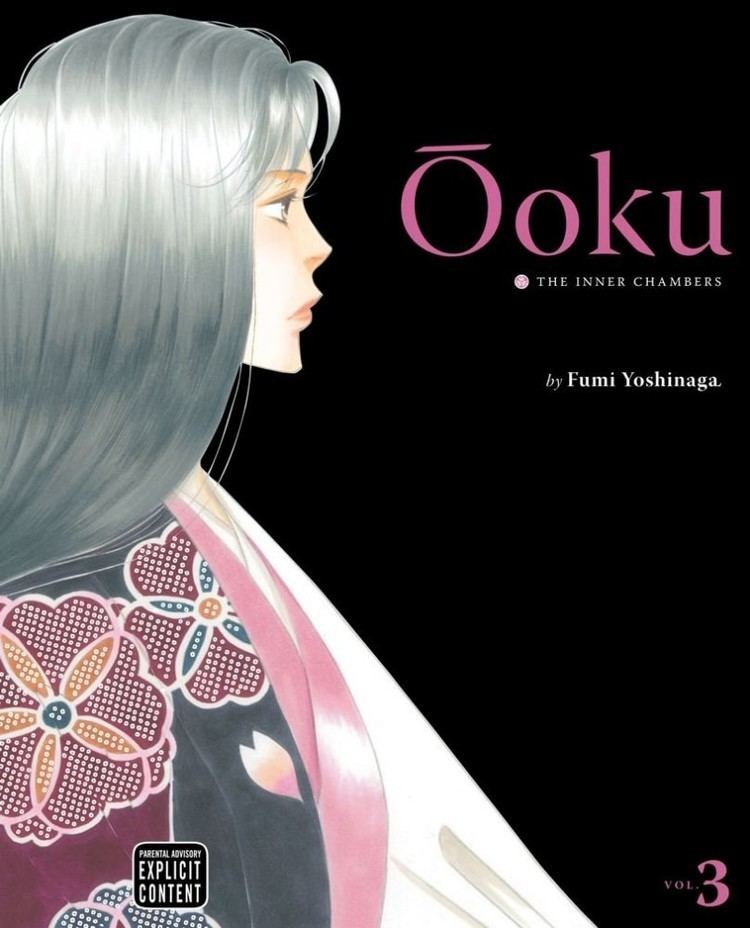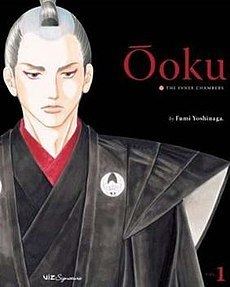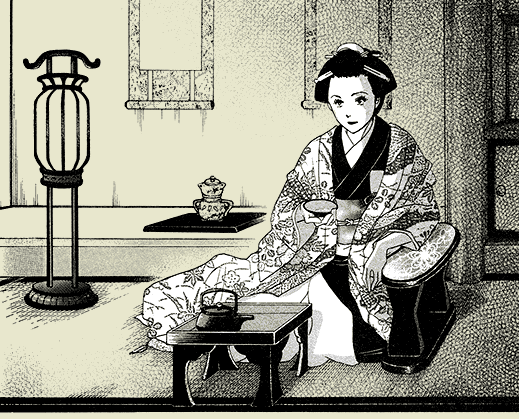Ōoku: The Inner Chambers
6 /10 1 Votes6
Director Fuminori Kaneko | ||||||||||||||||||||||||||||||||||
 | ||||||||||||||||||||||||||||||||||
Release date December 22, 2012 (2012-12-22) | ||||||||||||||||||||||||||||||||||
Ōoku: The Inner Chambers (大奥, Ōoku) is an ongoing Japanese manga series written and illustrated by Fumi Yoshinaga. The plot follows an alternate history of medieval Japan in which an unknown disease kills most of the male population, leading to a matriarchal society in which the Ōoku becomes a harem of men serving the now female shogun.
Contents

The manga has been serialized in Hakusensha's josei magazine Melody since 2005. Hakusensha has released thirteen tankōbon volumes to date, starting in September 29, 2005. The manga is licensed in North America by Viz Media and in Taiwan by Sharp Point Press. In addition to winning an Excellence Prize at the 2006 Japan Media Arts Festival and a special prize at The Japanese Association of Feminist Science Fiction and Fantasy's fifth annual Sense of Gender Awards in 2005, the manga was nominated for the first annual Manga Taishō in 2008 and three times for the Tezuka Osamu Cultural Prize before winning the Grand Prize in April 2009. It was adapted into a live action film in 2010 and it was adapted into a drama series and another live action film in 2012.
Plot

In an alternative timeline of feudal Japan, a strange disease that only affects men has caused a massive reduction of male population, thus women have to pick up men's jobs, changing the social structure. Now, after 80 years of the initial outbreak and current man:woman ratio of 1:4, Japan has become completely matriarchal, with women holding important political positions and men being their consort. Only the most powerful woman—head of Tokugawa shogunate—can keep a harem of handsome yet unproductive men, known as "Ooku."
Manga

Viz has stated the manga is "coming out in Japan at a rate of only one volume per year, with a projected ten volumes." Pancha Diaz, Fumi Yoshinaga's editor at Viz Media, explained that Ōoku was chosen to be "part of the Viz Signature line of manga" because "they’re manga that don’t easily fit into the shojo [for young girls] or shonen [for young boys] projected market, which might appeal to older readers. Books that might interest people who like American comics but avoid manga due to preconceptions. [Viz Media] wanted them to have a different presentation, to look a little different. Lots of manga are meant to be read very quickly, almost like a static cartoon, but these are meant to be savored. That’s why we chose the larger size—to signal that to the audience."

The manga is licensed in French by Kana and in Taiwan by Sharp Point Press.
Film

Fuminori Kaneko is the director of a live-action adaptation of the manga entitled Ooku Danjo Gyakuten (one English translation of the title being Lady Shogun and her Men), specifically of the Yoshimune and Mizuno arc. Filming began in the spring of 2010, and the film opened on October 1, 2010. Kazunari Ninomiya played the role of Yuunoshin Mizuno, a new addition to the shogun's harem, and Kou Shibasaki played Shogun Yoshimune.
Drama

A ten episode drama, 大奥〜誕生[有功・家光篇] aired on TBS between October 12, 2012 - December 14, 2012, starring Masato Sakai and Mikako Tabe. The screenwriter was Yumiko Kamiyama. It achieved an audience share of between 7.0% and 11.6% during its first airing. Masato Sakai won a prize in the Galaxy Award for his part in this drama and another work of his.
Reception
It was nominated for the first annual Manga Taishō in 2008. It was nominated for the Tezuka Osamu Cultural Prize three years in a row from 2007 to 2009 before it won the Grand Prize in April 2009. Previously, the manga also won an Excellence Prize in the 2006 Japan Media Arts Festival and special prize in The Japanese Association of Feminist Science Fiction and Fantasy's fifth annual Sense of Gender Awards in 2005. In January 2010, The American Library Association's Young Adult Library Services Association (YALSA) division listed first volume of VIZ Media version of Ōoku: The Inner Chambers in the 2010 Top Ten Great Graphic Novels for Teens list. The fourth volume of Ōoku: The Inner Chambers was ranked 5th on the Tohan charts between December 23, 2008 and January 5, 2009 and ranked 24th on the Tohan charts between January 6 and 12, 2009. The manga won the 2009 James Tiptree Jr. Award, which is awarded to science fiction works which expand or explore one's understanding of gender. In January 2011, the manga won 56th Shogakukan Manga Award in Girls' Category. The seventh volume of the manga sold around 167,000 copies in its debut week and reached No. 1 on the Japan's Oricon weekly comic ranking for the first time in July 2011.
In a review of the first volume, Casey Brienza of Anime News Network stated that "the manga is the perfect marriage of stylistic shortcomings to appropriate subject matter—the beautiful costumes are important players and plot points throughout the story, and the lack of character expression matches a world of intensely ritualized social interaction perfectly. Furthermore, while Yoshinaga isn't know[n] for her gorgeously rendered settings, artistic assistants provide much needed background detail and atmosphere." Holly Ellingwood describes the manga as a "fascinating study of 'what if'", and praises Viz's presentation of the manga. Ysabet Reinhardt MacFarlane found it difficult to connect with the characters in the first volume. Katherine Dacey criticised the English translation of the manga, finding it awkwardly juxtaposed faux-old-English with modern language, and enjoyed the characterisation of Yoshimune. She found the second volume more engaging than the first, but found the language distracting. Carlo Santos of Anime News Network enjoyed the artwork which shows the period detail, but disliked the lack of character development in the second volume and the English translation.
Leroy Douresseaux wrote that by the sixth volume, the focus of the series was much more on character drama and the political climate than on gender roles.
